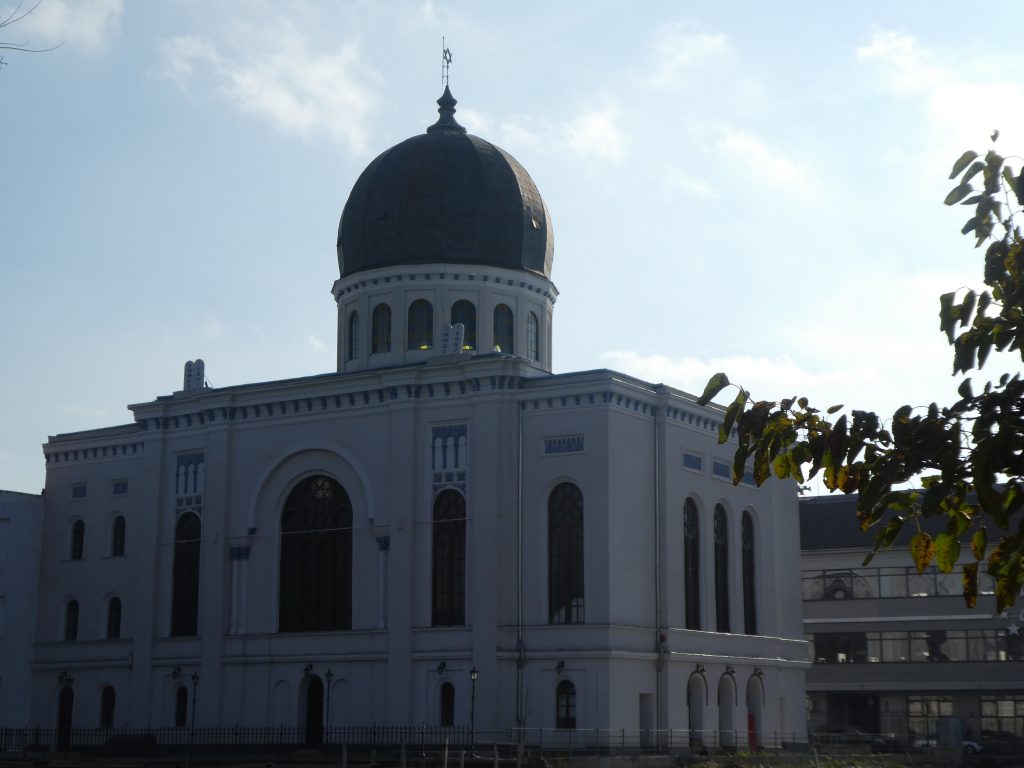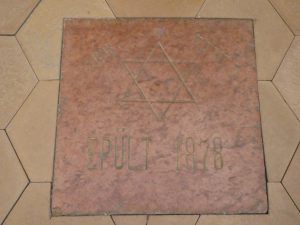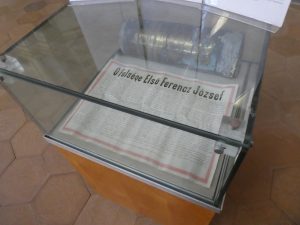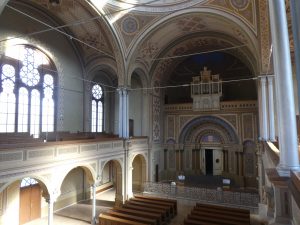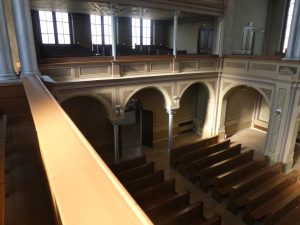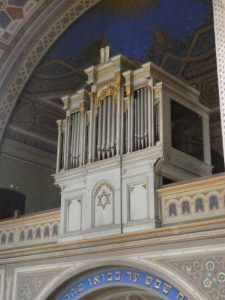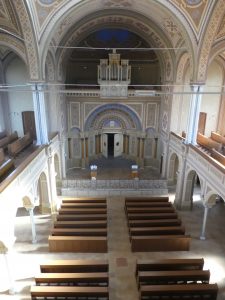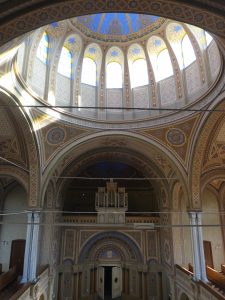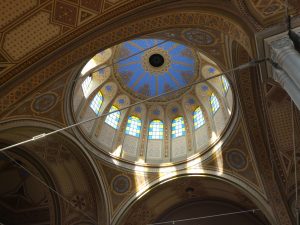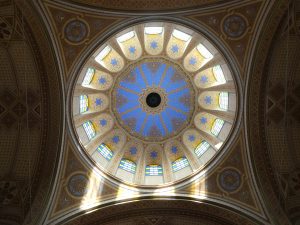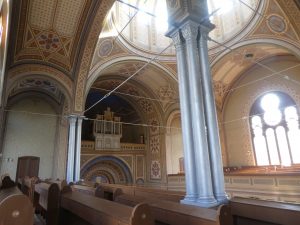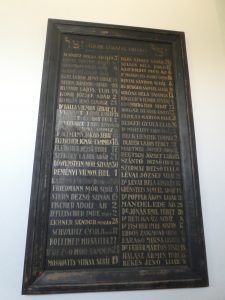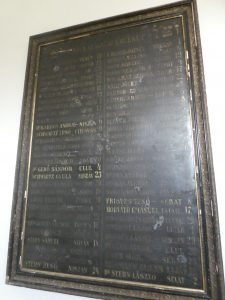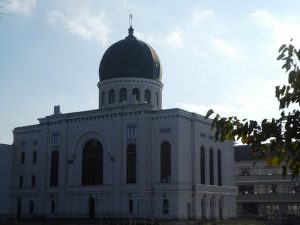Oradea – Oradea Neolog Synagogue
Located in a prominent riverside site in the heart of Oradea is the Neolog synagogue, which is one of the largest buildings of its type in Europe. There were two Jewish communities in Oradea, the Neolog and the Orthodox, which jointly made the city one of the hearts of Judaism in the Austro-Hungarian Empire.
The stone records the completion of the synagogue, which was in 1878, with work having started in October 1876. The building could house over 1,000 people and was similar in design to the synagogue in Nuremberg, which the Nazis ripped down in 1938.
When the building was restored recently, this letter from 1878 was found in a sealed container.
This photo is taken from upstairs and it’s a beautiful building, being spacious and light. I didn’t expect this synagogue to be open, it’s rare to find a building such as this which survives, given the damage done to them during the Nazi years. There was a small admission charge to get in (5 lei, so just under £1), but they’ve allowed access to nearly all parts of the building.
However, the restoration of the building is recent and must have been a real labour of love to get to this stage. The Jewish community in the city was nearly destroyed by the time that the Second World War had ended, so the synagogue fell out of religious use. There had been efforts to keep the synagogue open for religious services in the late 1940s, but the new communist regime didn’t take positively to this plan. The small Jewish community that had survived the war, which was just a few hundred, decided though that they wanted to try and keep the building for what might be a more positive future and so they maintained it as best as they could.
Another photo from upstairs, looking towards the rear of the synagogue.
The organ.
Looking down into the synagogue.
Two photos of the dome.
The whole building is ornately decorated. One mystery to me is how the Jewish community managed to keep ownership of this building during the communist era in Romania, I’m surprised that this piece of prime real estate wasn’t taken off of them. I can only imagine that there were some determined members of the community who fought to prevent any such action.
Two panels, which again I’m surprised have survived as so many of these were lost during the Second World War and the run up to it. The last rabbi of the synagogue was István Vajda, who was forced to become a member of the Jewish council overseeing the new ghetto, and he had to endure the knowledge that his wife was being tortured. He sadly died in a concentration camp.
Standing proud once again in the heart of Oradea.

